What do you need in a beginner knife?
Check out the Mora 840 Companion. It may have everything you’re looking for.
by Leon Pantenburg
One of the most common questions I get concerns recommendations for a first knife. That topic was discussed in another post: Ten things to consider when buying that first knife
About 12 years ago, Boy Scout Troop 18, in Bend, Oregon bought 40 Mora 840s in bright orange for the boys to use. The troop sold these to the boys for $8 each. Last year, the troop bought 50, and these are in constant use. They went for $10 each.
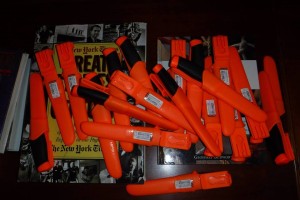
Troop 18 bought 50 Mora 840 Companions for the scouts to use.
I have not seen any of these Moras break or fail in any way, despite the hard wear put on them. The boys use them for everything, from cleaning fish to Dutch oven cooking.
One of the adult leaders, former scoutmaster and Eagle Scout Pat Simning, has used his Mora for field dressing moose, caribou, deer, elk and wild hogs. After last year’s elk hunt, Pat upgraded to a Bark River Snowy River.
My original 840 is still used frequently. It is a great canoe trip knife, and cleans fish nicely. It works well for whittling and just about any other task thrown at it.
If you are looking for an inexpensive, user knife to get started with, take a hard look at the Mora 840 Companion.
Mora is a brand. The town of Mora, Sweden has been a knife-making center for centuries. Smiths in Mora developed a basic, functional style that became known as the “Mora Knife.” Until recently there were two remaining large companies in Mora, K.J. Eriksson and Frosts of Mora. They have merged into “Mora of Sweden.”
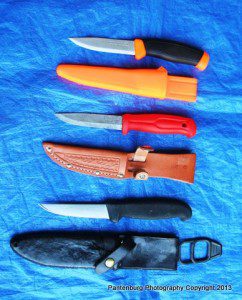
These are several of my favorite Mora-style knives.
Mora knives place function before style. They have the flat Scandinavian grind that goes cleanly to the edge, and come from the factory very sharp.
A Mora specialty is the laminated carbon blade. This is a three-part sandwich, with a core of high carbon steel protected by sides of tough lower carbon steel.
Here are the 840 Companion specs:
- Fixed blade outdoor knife with 4.1-inch high carbon steel blade
- Limited lifetime manufacturer’s warranty; Made in Sweden
- Patterned, high-friction grip makes the knife comfortable to hold and easy to handle
- Blade length: 4.1 inches (104 mm);
- Blade thickness: 0.08 inch (2.0 mm); Overall length: 8.6 inch (218 mm); Weight w/ sheath: 3.9 oz. (110 g)
Here’s the good stuff:
Price: You can get an 840 for about $20 just about anywhere. Buy them in bulk, as the scouts do, and the knives are substantially cheaper. The Moras are designed to be almost-disposable utility knives, so you don’t have to worry about getting too attached, or bonding with your knife. But it’s OK if you do!
Design: The Scandinavians came up with their basic knife design back in the days of the Vikings. The Vikings were proponents of the big knife/little knife theory.
Their big knife might be a broadsword or some other long, sharp, pointy object, designed to cause great bodily harm. But their small knife, according to my research, would be a do-all, Mora-style blade. This small knife did the majority of the work because it was so handy, and was carried everywhere.
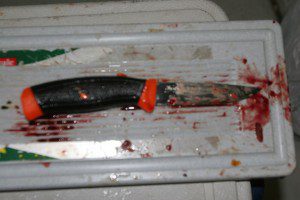
After cleaning an eight-trout limit the handle on this Mora was still easy to use safely.
Handle: Knife makers hear constant bellyaching from me because they make knives with too-short handles. My palm measures four-inches across, and many otherwise excellent knives just don’t work for me.
The 840 handle is perfect for my hands, and it also works well for kids’ smaller grip. The rubber handle doesn’t get slippery during use, and the contours are almost perfect.
Blade length: The 4.1-inch blade is another excellent choice. For all-around use, it is really hard to beat a four-inch blade.
Point: The 840 has a slight drop point, which is a good option for an all-around user. Price being what it is, you can alter the point however you want to.
Grind: The Scandinavian Grind is a wide flat bevel that runs to the edge of the blade, according to Ragweed Forge, and there is little or no secondary bevel. This is a great grind to learn how to sharpen on. The bevel itself is the guide. Lay the edge so it is flat on a whetstone, and use a slicing motion. I think the scandi edge is the easiest to sharpen.
Steel: The Morakniv company uses blades of 12C27 stainless steel, UHB-20C carbon steel, Triflex steel, or very hard (HRC61) carbon steel laminated between softer alloyed steel. The 840 blade is made from the laminate, and its edge-holding ability is excellent.
Know this:
- The 840 is not a full tang knife. It appears to be about a 3/4 tang. It will not be as strong as a full tang, and you (probably) won’t be able to drive it into a tree and stand on the handle.
- The sheath is not safe to carry as is, IMO, and needs to be modified before it can be safely used. (Here’s how to modify it.)
IMHO, your first knife should be a rigid blade, and inexpensive. You won’t know exactly what you want and need until you use a knife some. The 840 is a good place to start, and if the pattern, design or handling aren’t suitable, you’re only out about 20 bucks.
If you do like the Mora style, you can find high end knives in that pattern.
Or you may stick with the 840. Dave Nessia, a desert survival instructor, is carried the featherweight Morakniv Companion on the TV show “Alone.” In Season two, Mary Kate Green carried a Companion.
Maybe you’ll decide to stick with the 840, since it meets all your needs. In either situation, you can’t go wrong starting out with a Mora 840.
Please click here to check out and subscribe to the SurvivalCommonSense.com YouTube channel – thanks!

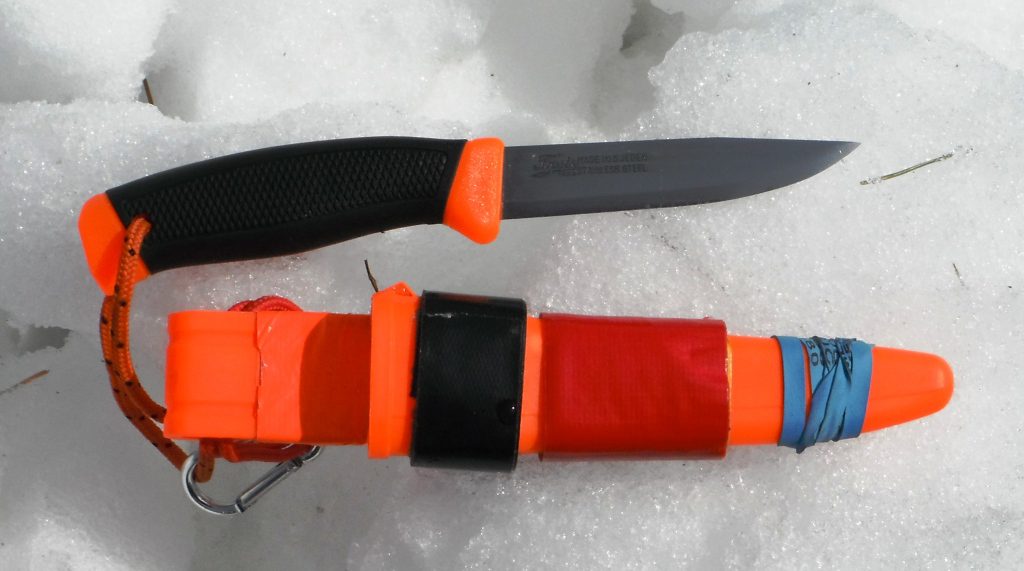

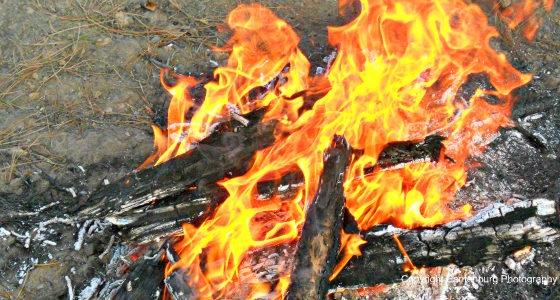
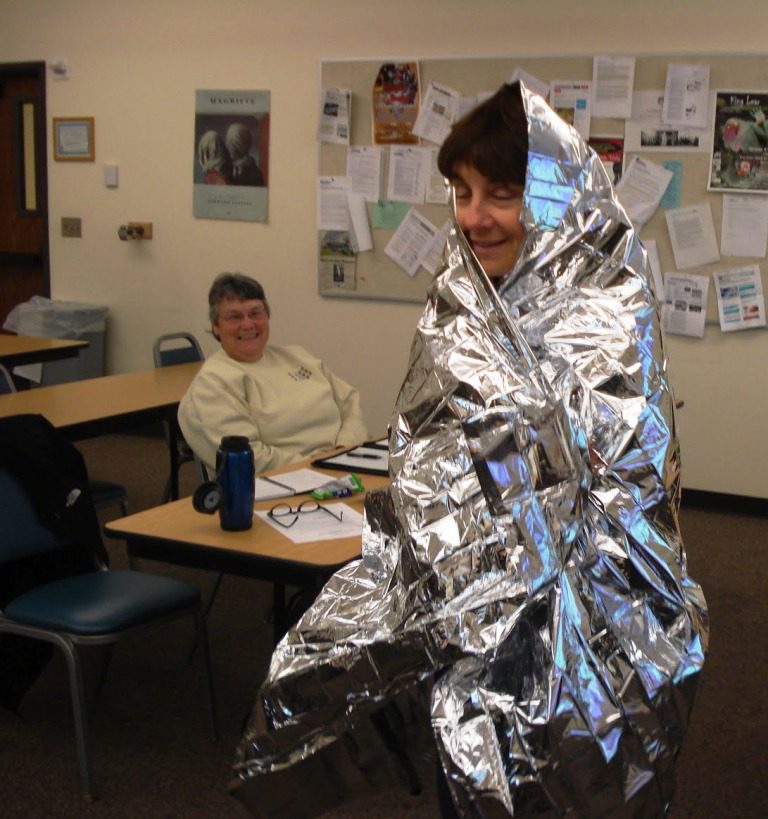
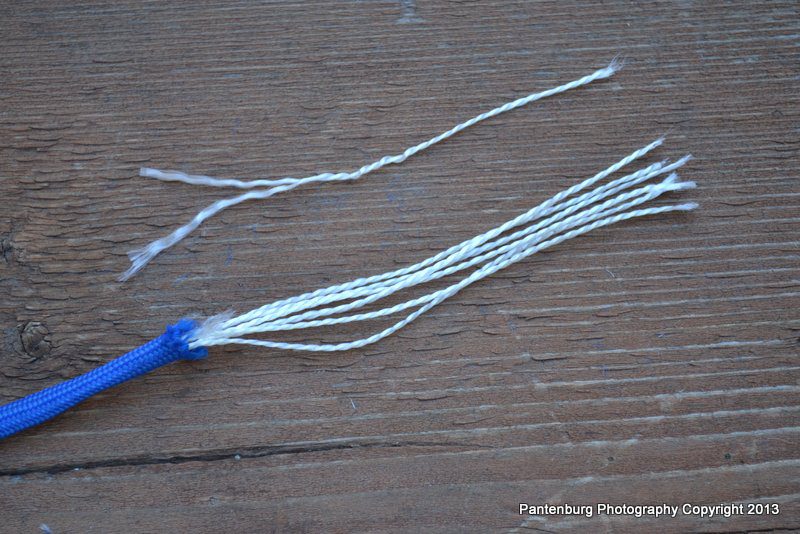
Leave a Reply